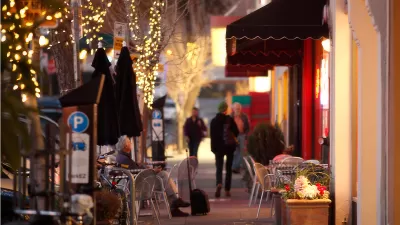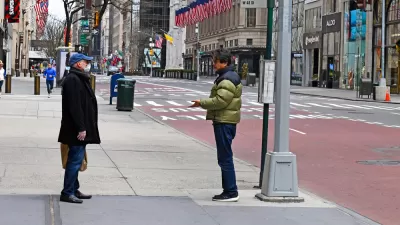Alexander Garvin argues that it’s time for the end of the mega-project in an excerpt from "The Heart of the City: Creating Vibrant Downtowns for a New Century."

A new stadium, or some other mega-project isn't going to save downtown, Alexander Garvin argues in an excerpt from his new book, The Heart of the City: Creating Vibrant Downtowns for a New Century. "Rather than engaging in cataclysmic redevelopment, building huge, extraordinarily expensive public facilities, or giving gifts (aka subsidies) to privately owned businesses, we should be devising actions that help the people and institutions who are changing," Garvin writes. To help these people, Garvin suggests expanding the public realm and working to create a sustainable environment.
Garvin uses the example of New York and Denver as places that have made more public space for people in the city’s center. "New York City has been particularly effective in doing this without acquiring additional property by reconfiguring territory used by pedestrians, moving vehicles, and parking," Garvin contends. Creating safe attractive spaces for people to be in the city's center can shift transit modes, and encourage walking and recreation.
Downtowns also need to think about their local environments. Garvin talks about sustainability not just in a global sense but also in terms of improving the desirability and vibrancy of the city’s center. "Trees are the most effective and underestimated downtown occupants that improve air quality while reducing noise, absorbing runoff, and stabilizing ambient temperature," Garvin writes. Beyond trees, Garvin argues cities should look to create more park land by acquiring extra land when undertaking projects and converting the land into public parks.
FULL STORY: Lessons for Any Downtown

Alabama: Trump Terminates Settlements for Black Communities Harmed By Raw Sewage
Trump deemed the landmark civil rights agreement “illegal DEI and environmental justice policy.”

Planetizen Federal Action Tracker
A weekly monitor of how Trump’s orders and actions are impacting planners and planning in America.

The 120 Year Old Tiny Home Villages That Sheltered San Francisco’s Earthquake Refugees
More than a century ago, San Francisco mobilized to house thousands of residents displaced by the 1906 earthquake. Could their strategy offer a model for the present?

Opinion: California’s SB 79 Would Improve Housing Affordability and Transit Access
A proposed bill would legalize transit-oriented development statewide.

Record Temperatures Prompt Push for Environmental Justice Bills
Nevada legislators are proposing laws that would mandate heat mitigation measures to protect residents from the impacts of extreme heat.

Downtown Pittsburgh Set to Gain 1,300 New Housing Units
Pittsburgh’s office buildings, many of which date back to the early 20th century, are prime candidates for conversion to housing.
Urban Design for Planners 1: Software Tools
This six-course series explores essential urban design concepts using open source software and equips planners with the tools they need to participate fully in the urban design process.
Planning for Universal Design
Learn the tools for implementing Universal Design in planning regulations.
Clanton & Associates, Inc.
Jessamine County Fiscal Court
Institute for Housing and Urban Development Studies (IHS)
City of Grandview
Harvard GSD Executive Education
Toledo-Lucas County Plan Commissions
Salt Lake City
NYU Wagner Graduate School of Public Service





























